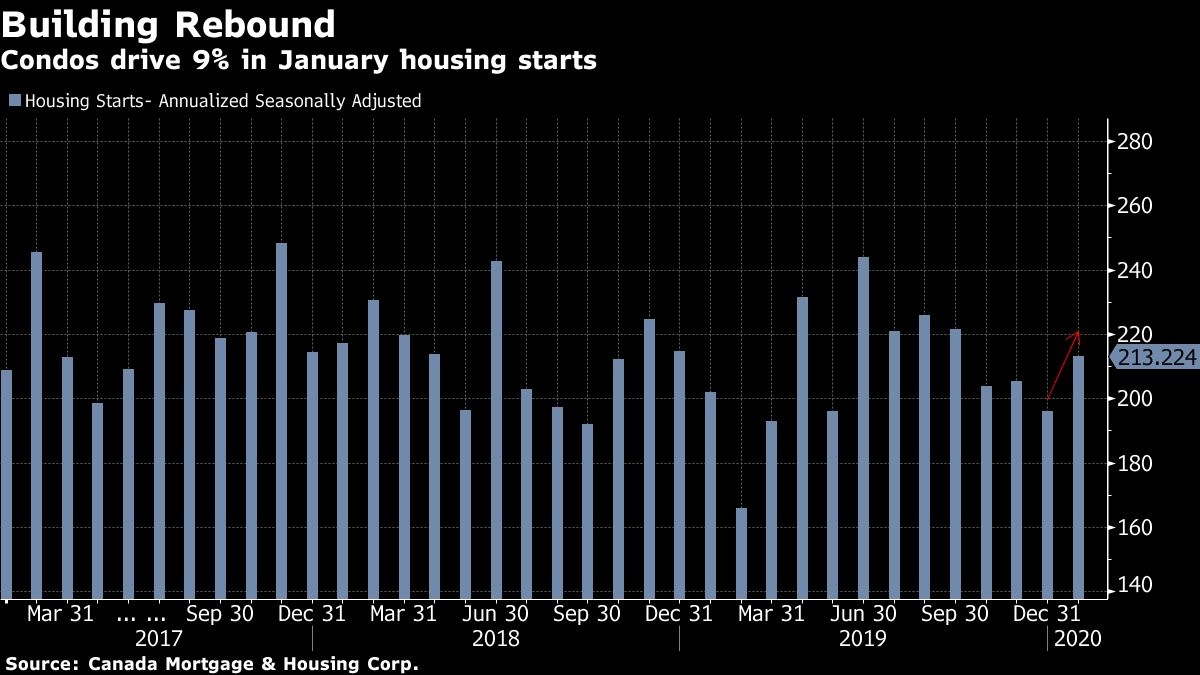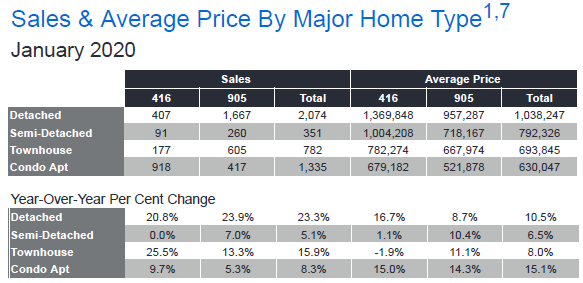This year’s Market Year in Review and Outlook Report follows the increased demand for ownership and rental housing, and the persistent constrained supply of listings, especially where ownership housing is concerned. TRREB’s baseline forecast is calling for strong growth in home sales and selling prices, while the supply of listings is expected to be flat-to-down.
“Robust regional economic conditions, strong population growth and low borrowing costs will support increased home sales in 2020. Market conditions will become tighter, as transactions will continue to outpace the growth in available listings. The resulting increase in competition between buyers will likely result in an acceleration in price growth across all major market segments,” said TRREB President Michael Collins.
“The fact that tens of thousands of new households form each year in the GTA is a testament to our region’s competitiveness on the global stage. We attract some of the best talent available into and across a diversity of economic sectors. However, in order to remain competitive, policy makers need to continue their focus on the constrained GTA housing supply and to ensure we have an integrated and efficient transit and transportation network that will effectively allow the movement of people and goods. Research in this year’s Market Year in Review and Outlook Report addresses these important topics,” said John DiMichele, TRREB CEO.
2020 GTA Outlook and York Region Summary
The following points summarize market conditions in the GTA and York Region, including TRREB’s overall outlook for 2020, with results from the Ipsos Home Owners and Home Buyers surveys:
Strong underlying demand drivers should see home sales crest the 90,000 mark in 2020, with a point forecast of 97,000 for the TRREB market area as a whole – up by almost 10.5 per cent compared to 87,825 sales reported in 2019. TREB does not produce a specific sales forecast for York region, but York Region sales have accounted for approximately 18 per cent of total sales within TREB’s market area over the past decade.
More than half of intending home buyers claimed to have been affected by the OSFI mortgage stress test. In order to adjust to the more stringent qualification standards, intending buyers followed a number of different paths. The most common responses involved changing home price, type or location. Some intending buyers also looked to alternate lenders, such as credit unions or the secondary lending market. However, it is important to note that Ipsos results also suggest that fewer intending home buyers seem to have been impacted by the OSFI mortgage stress test in York Region compared to the GTA as a whole.
The most popular home type for intending buyers was the detached house. However, the share of intending buyers GTA-wide who sought a detached house has declined markedly since the first survey in 2015 – from 54 per cent in the fall of 2015 to 42 per cent in the fall of 2019. In York Region, however, the share of intending buyers focused on a detached home was slightly higher, at 45 per cent.
Unless we see a significant increase in supply, it is highly likely that new listings will not keep up with sales growth in 2020. The end result will be an acceleration in price growth over the next year, as an increasing number of home buyers compete for a pool of listings that could be the same size or smaller than in 2019.
The point forecast for the overall average selling price across the TRREB market area in 2020 is $900,000, close to a 10 per cent increase compared to the average of $819,319 reported for 2019. This forecast rate of growth presupposes that price growth will continue to be driven by the less expensive mid-density low-rise home types and condominium apartments. If the pace of detached home price growth starts to catch up to that of other major home types, the average selling price for all home types combined could push well past the $900,000 mark over the next year. Average price growth in York Region is generally expected to follow the GTA trend in 2020.
“After more than three years of slower market activity brought on largely by changes in housing-related policies at the provincial and federal levels, home sales will move closer to demographic potential in 2020. The key issue, however, will be the persistent shortage of listings. Without relief on the housing supply front, the pace of price growth will continue to ramp up. Policy makers need to understand that demand side initiatives on their own will only have a temporary impact on the market,” said Jason Mercer, TRREB’s Chief Market Analyst and Director of Service Channels.
“During the recent federal election campaign, Ipsos identified affordability issues as being top of mind for Canadians, and central to those concerns are housing costs in Canada and the GTA in particular. In the coming year, governments will no doubt be focused on how their policies are impacting the delicate balance between housing supply and demand, and how they can best provide relief to Canadians’ pocketbooks in the area of housing costs,” said Sean Simpson, Vice President at Ipsos.
New Research on Housing Supply, Regional Transportation and the Regional Economy
This year’s report is all about planning for growth in the Greater Toronto Area and broader Greater Golden Horseshoe. The subtitle for this year’s report is “The Time is Now” and the contents within the report puts the focus on planning for growth in the GTHA. In addition to sharing the latest data on the Greater Toronto Area ownership housing market, rental market and commercial real estate data, the Toronto Regional Real Estate Board has worked with several partners to bring top-quality and evidence-based research. Our partners this year include Altus Group, Canadian Centre for Economic Analysis, the Pembina Institute and Ryerson University.
“Toronto's booming economy has brought with it housing affordability challenges that will continue throughout the next decade. Both the provincial and municipal governments must support a massive increase in the supply of all types of housing and tenures as priority number one and quickly transform the land use planning system to make this happen,” said Frank Clayton, Senior Research Fellow, Ryerson University’s Centre for Urban Research & Land Development.
“To accommodate the 480,000 new daily commuters that are expected to join the system between now and 2041, transportation infrastructure capacity will have to increase significantly, and especially for public transit. To get there without making congestion worse, it’s going to be very important to evaluate each new investment in transportation infrastructure on the basis of its productivity to make sure pressure is relieved in the right places,” said Paul Smetanin, President and CEO, Canadian Centre for Economic Analysis.
The Canadian Centre for Economic Analysis research in TRREB’s Market Year in Review and Outlook Report looks at growth patterns and presents a comprehensive review of current transportation challenges across the GTHA, as well as suggested solutions for future transportation opportunities.
“Building transit-friendly communities helps individuals and families save on their housing and transportation costs, improves transit use, manages traffic congestion, and in doing so, reduces pollution. In the GTHA, there’s an exciting opportunity to greatly improve access to bus transit that is already widely relied on. To seize these opportunities, communities should prioritize gently increasing housing supply and choice around the GTHA’s bus network,” said Carolyn Kim, Ontario Regional Director, Pembina Institute.
The Pembina Institute presents research on transit-supportive development and the interplay of housing diversity and ideas on increasing housing supply.
TRREB’s Market Year-in-Review and Outlook Report can be downloaded from TRREB.ca.
| Outlook Summary Table | |||||
| 2016 | 2017 | 2018 | 2019 | 2020(F) | |
| TREB MLS® System Sales | 113,041 | 92,342 | 78,020 | 87,825 | 97,000 |
| TREB MLS® System Average Price | $729,824 | $822,510 | $787,842 | $819,319 | $900,000 |


